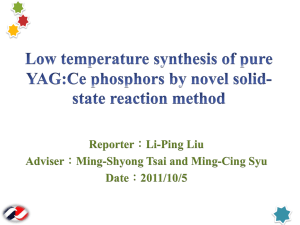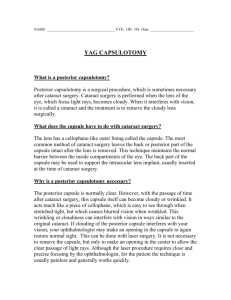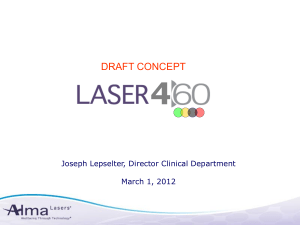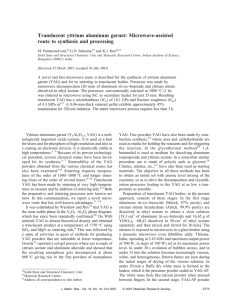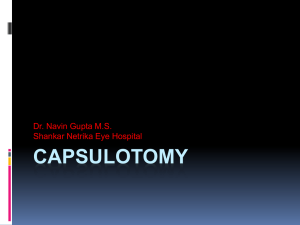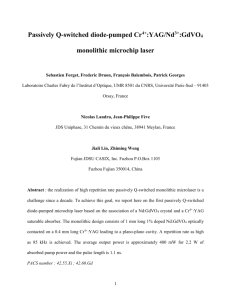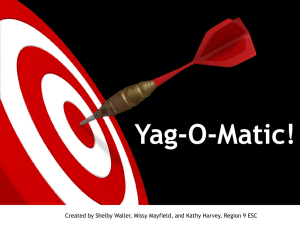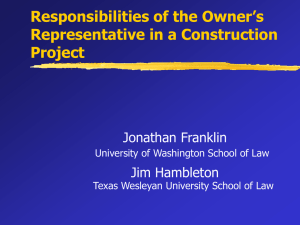YAG capsulatomy
advertisement
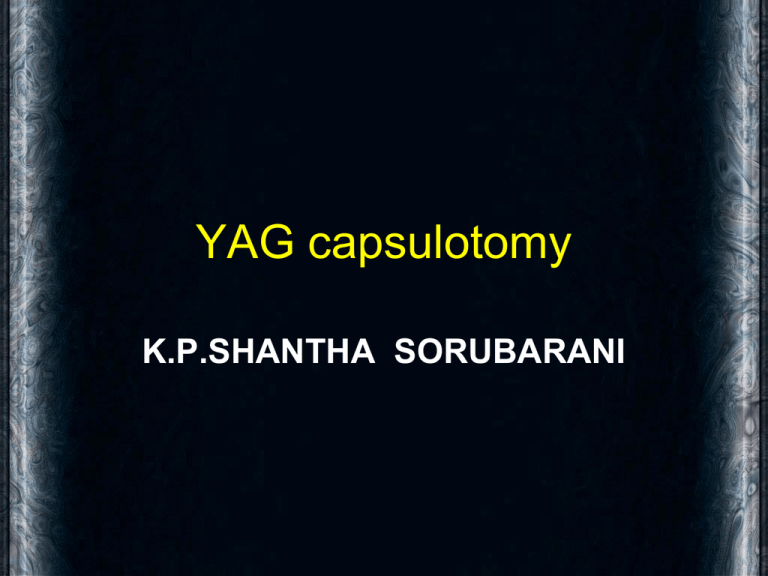
YAG capsulotomy K.P.SHANTHA SORUBARANI What is PCO ?? • Posterior capsular opacification is opacification / whitening of posterior capsule Why it occurs ? • Due to proliferation of lens epithelial cells from the equator across the posterior capsule In which type of patient / surgery it is common? • Depends on type of IOL (material & edge) • Patient factors When it occurs ? • Time interval between surgery and occurrence of PCO varies – months to years Types of PCO • Fibrous Type: Multiple layers of lens epithelium ( fibrous metaplaisia ) migrates and becomes opaque • Elschnig Type: Migration of equatorial epithelial cells with formation of small pearl like opacities. • Mixed type Before YAG Other conditions for which we do laser here??? • • • • YAG pigment dispersion YAG membranolysis YAG vitreolysis YAG anterior capsulotomy ( phimosis relaxation ) • Capsular Bag Distension Syndrome How Nd- YAG laser works ?? • Principle called - Photo disruption • Very intense laser energy is focused into a small area for a very short period of time producing a hole in the opacity Indications • Decreased vision – Due to PCO, Pigments or precipitates on IOL, Capsular phimosis • Monocular diplopia or glare. • PCO preventing clear view of fundus required for diagnostic and therapeutic purposes. Contraindications • Absolute: - Inadequate visualization of posterior capsule (eg ) Corneal scars , corneal edema. - An un co-operative patient. • Relative: - Known / suspected CME. - Active intraocular inflammation. - High risk for RD. – High myopes Pre – laser assessment • • • • • Visual acuity Retinoscopy Slit lamp assessment of opacification IOP Fundus evaluation -Direct ophthalmoscopy and indirect – if needed Preparation of patients • Describe the purpose and nature of procedure in detail in his/ her own language • Dilate the pupil to about 4 to 5mm facilitating visualization of posterior capsule ( except in vitreolysis – instill pilomine ) Preparation of patients • Tell the patient that the procedure is - PAINLESS - Maintenance of STEADY FIXATION • No Anesthesia is required • If a contact lens is used, administer one drop of 4% lignocaine in the eye to be treated Technique • Can be done with or without a contact lens. • Use the smallest amount of energy possible with which the posterior capsule can be cut. - YAG Posterior capsulotomy - 1.3- 2.5 mJ ( post ) - YAG pigment dispersion – 0.4 – 0.8 mJ (ant ) - YAG membranolysis - 0.8- 1.3 mJ (ant ) - YAG vitreolysis - 0.8 mJ (ant ) - YAG anterior capsulotomy -1.3- 1.7 mJ (ant ) ( varies depending upon density of PCO) Size of posterior capsulotomy • The capsulotomy should be as large as the size of pupil in ambient light. After YAG Fibrous PCO Elsching’s PCO Timing • A YAG Laser posterior capsulotomy is not done less then 6 months after surgery • The procedure is only performed when visual acuity significantly diminishes due to posterior capsule opacification • Others Post YAG treatment • After the Nd YAG laser capsulotomy , 1% apraclonidine is administered topically to control spikes in IOP • Topical ab–steriod four times for-1week • Frequency increased depending upon cases • Anti glaucoma / diamox if needed • If done along with suture removal – NSAIDAntibiotic combination Post YAG treatment • After ½ to 1 hour, repeat refraction and IOP (if needed) • Patient is reviewed as per doctor s advice Complications • Elevation of IOP - Use less energy in glaucoma patients - Pre and Post YAG Brimonidine - Check IOP in glaucoma cases • Damage to IOL – pitting - Check anterior / posterior - More if fibrous PCO / poor focusing/ un co operative patients Complications • Cystoid macular edema • Retinal Detachment – rare , definite risk in myopia patients - use less energy in myopes THANK YOU
